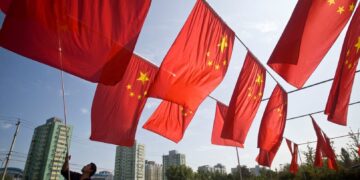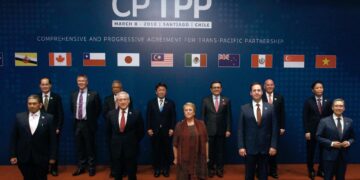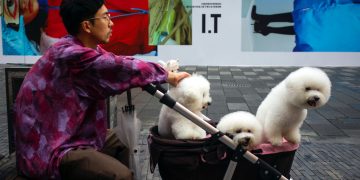When the Tesla Model S debuted in China in April 2014, the country was embroiled in a heated debate over how to balance economic growth and environmental protection. Taking advantage of the national discussion—and China’s luxury goods consumers—Tesla successfully promoted its low-emission vehicles in the Chinese market, selling more than 1,000 models within its first two months of operations in China.
However, foreign and domestic carmakers in China’s electric vehicle industry still have a long way to go. Despite a slew of government policies in 2014 that supported charging infrastructure, extended purchase subsidies and tax breaks to consumers, and outright mandated the use of electric vehicles by some government offices, the number of electric cars on China’s roads remains limited. In early January, even Tesla reported a pronounced drop in its China sales. What does this disconnect between policy and results mean for companies looking to enter China’s electric vehicle market? And how will the market develop in 2015?
The development of NEVs in China
Electric vehicles, which together with hybrid and fuel cell cars are commonly known as new-energy vehicles (NEV), are not a new concept for Chinese policymakers. NEV development has been an element of China’s Five-Year Plans since 2001, and throughout the early 2000s China initiated a series of support measures including large-scale NEV pilots in Shanghai and Shenzhen. By 2010, NEVs were categorized as a strategic emerging industry, allowing manufacturers to qualify for regional investment subsidies. In 2012, the State Council released its Notice on Energy Conservation and New Energy Vehicle Industry Development (2012-2020), calling for the production and sale of at least 500,000 electric and hybrid vehicles by 2015. Policymakers have said they hope to increase that number to 2 million by 2020.
And despite this decade-long government push, significant challenges have remained. In 2013, only 17,624 of 21.98 million total vehicles sold in China were NEVs, representing less than 0.1 percent of all auto sales. This hardly reaches the target of 500,000 NEVs on the road by 2015, and stands in stark contrast to figures in other markets. For example, according to industry publications, electric vehicle sales in the United States reached 96,000 units in 2013 alone.
One obstacle to greater usage in China is the high price tag. In addition to an expensive base price, the batteries needed to operate most NEVs are costly, reducing consumer demand. But perhaps an even higher barrier is the lack of charging infrastructure. By the end of 2013, China’s State Grid Corporation—one of China’s two state-owned enterprises tasked with managing the nation’s power system—had constructed only slightly more than 400 charging stations. In contrast, by May 2013 the United States had more than 20,000 charging stations. With these barriers to use, new-energy vehicles have not yet been an attractive alternative to conventional gas-powered automobiles.
Changing policies and renewed focus in 2014
Despite these obstacles, 2013 and 2014 saw a marked change in China’s NEV market, with sales records dwarfing statistics from previous years. In 2014, NEV sales stood at 74,800, representing a 325 percent jump from the previous year. Advances in alternative fuel technology have made NEVs more attractive to Chinese consumers, but perhaps the larger driver of sales is the slew of recent national policies subsidizing the production and sale of NEVs.
The most significant policies emerged in September 2013, when four central ministries released a plan promoting NEV use between 2013 and 2015. The 2013 plan provided a national subsidy of RMB 35,000-60,000 ($5,656-$9,696) for consumers who purchase NEVs. Vehicles qualify for the subsidy as long as they are in a Ministry of Industry and Information Technology (MIIT) catalogue restricted to locally-produced models. The national subsidy is expected to run through 2020, but will scale down each year until then. After that, the government has signaled it may decide to let the market play a greater role in consumption.
Another way in which officials have been encouraging NEV purchase is by exempting them from taxes and other fees. In September 2014, China’s State Council removed the 10 percent purchase tax on domestic-made NEVs, which will continue through 2017. Several local governments, including Shanghai, have experimented with programs offering free license plates for new Tesla vehicles—a significant incentive, considering that Shanghai license plates themselves run for RMB 74,000 ($11,959) a piece on average. Other local governments have also begun offering their own incentives for NEV purchases, oftentimes matching the national subsidy RMB-for-RMB. These local incentives can go as high as RMB 60,000 ($9,696), providing a total RMB 120,000 ($19,395) purchase subsidy for qualified vehicles.
China has also taken important steps toward shoring up supporting charging infrastructure to bolster consumer demand in tandem with other incentives. In May 2014, China’s State Grid announced plans to open the country’s distributed power grid and electric vehicle charging equipment markets—which were previously state-run—to private investors as a way to promote the construction rate of charging piles. In August, major municipalities like Beijing, Shanghai, Shenzhen, and Guangzhou, released plans to construct NEV-related infrastructure, including charging stations, charging piles, power exchange centers, and power distribution centers. And in late November, four separate ministries announced plans to subsidize the construction, operation, and upgrading of NEV charging stations in qualified cities.
Finally, in July 2014, the National Government Offices Administration declared that from 2014-2016, no fewer than 30 percent of all government cars purchased each year must be battery-powered, gasoline-electric hybrids, or other new non-polluting vehicles. Government procurement will include both domestic and foreign-produced models, though all models have to be physically produced in China; foreign imports cannot qualify.
The prioritization of NEV sales plays into bigger policy shifts at the national level that favor sustainable development over rapid economic growth. Since the leadership transition in 2012, President Xi Jinping’s administration has been paying more attention to severe environmental issues resulting from China’s breakneck economic growth, such as air, water, and soil pollution. This is a departure from previous policies under President Hu Jintao, who was often viewed as promoting GDP growth at the expense of China’s environment. One of the biggest differences between the Xi and Hu administrations is the move from prioritizing rapid to “quality” GDP growth. The promotion of NEV production and sales under Xi has seemed a relatively natural component of China’s shift to a new mode of development and growth.
Lingering challenges for NEV development
While the central government has done an admirable job in pushing for the development of charging infrastructure, there still are no national infrastructure standards. In conversations with one US-China Business Council (USCBC) member company, this could mean that a vehicle built in Shenzhen may have operability issues in Shanghai, due to differences in communication protocol between the model and the local grid. This interoperability problem is further exacerbated by China’s NEV demo areas, industrial incubators located in 88 cities that regularly issue new and differing NEV standards. Without a uniform standard uniting the infrastructure in these different areas, application of NEVs will remain limited on a national scale.
A lack of standards will have an impact on NEVs imported from other markets as well. While there does not exist one global standard for NEVs—China, Japan, the United States, and the European Union all have their own policies governing electric currents and charging infrastructure—imported NEVs will have to be reworked to accommodate local charging stations.
Finally, despite all the efforts of the central government to spur demand, consumer taste remains a significant obstacle for NEV growth. At an annual conference held by China’s Caijing magazine, the chairman of a Chinese solar company said that consumers in China are not used to using alternative sources of energy, including in hybrid and electric cars. Not only are there barriers to the average consumer in terms of cost and infrastructure, but there are also mental barriers to purchasing NEVs. In a country where automobile ownership is a mark of status and success, he said, car purchasers may still be biased toward classic, internationally-recognized models—a designation that many NEVs have not yet attained. There have been rumors that China has considered implementing a gasoline tax to change consumer behavior, but according to industry insiders, such a tax has not been formally proposed.
Where do foreign firms fit in?
With their global experience and technological expertise, foreign firms occupy an advantageous position to assist China in its transition to a more sustainable, energy-efficient model of development. Several well-known foreign firms have already entered China’s NEV market, including Tesla, General Motors, Nissan, and BMW. And these companies have benefitted from the flurry of NEV development policies that have been released in the last several years, according to USCBC members.
However, investment access remains a key problem area for foreign companies. According to China’s 2014 draft Catalogue Guiding Foreign Investment (CGFI), foreign investment in the NEV industry is “encouraged,” meaning that there are few restrictions on such activities. Nevertheless, a 50 percent ownership cap remains in battery manufacturing—a crucial component for NEVs—mirroring the 50 percent ownership caps across the auto industry.
Despite these ownership restrictions, foreign companies have not been barred from the government support measures for NEV development. Dongfeng-Nissan, Beijing-Hyundai, and Shanghai GM have all been listed on the national catalogue of NEVs promoted by MIIT. Local catalogues exist in many areas as well, including in cities like Beijing and Shanghai. The vehicles listed in these local catalogues do not have to also be in the national catalogue. For instance, Tesla, while not included in the national catalogue, has still been able to enjoy the free license plate program in Shanghai. This effectively made Shanghai the first Chinese city to subsidize the import of foreign NEVs—a significant move given the structural obstacles imports face in the market.
Auto manufacturers are not the only companies poised to benefit from NEV growth. Despite the ownership cap, opportunities also exist in battery manufacturing. However, as is the case with charging infrastructure, China has yet to establish national standards and technical requirements. China is also in the middle of a larger debate about NEV battery manufacturing, as the nation looks to shift away from lead-acid batteries to lithium-based material.
Finally, US automakers may stand to benefit from official government purchases of NEVs. Policy language on government procurement does not explicitly limit purchase to domestic producers, and US automakers including Ford are already selling their cars to local governments in cities like Chongqing. As NEV policies develop and demand increases, foreign automakers may find it worthwhile to consider submitting NEV products for local government tendering.
[author] Nick Marro ([email protected]) is business advisory services manager at the US-China Business Council’s (USCBC) Beijing office. Hengrui Liu and Yu Yan are interns at USCBC’s Beijing office.[/author]






























